Are you planning a journey across Germany and eager to explore its most historic city? Welcome to Trier, Germany’s oldest city, a destination filled with Roman heritage, medieval structures, and stunning landscapes. In this article, we will discuss why Trier should be included on every history enthusiast’s travel list.
- Trier, Germany’s oldest city
- What Makes Trier the Oldest City in Germany?
- Trier’s main attractions
- Porta Nigra: The Legendary Entrance to Ancient Trier
- Trier’s Roman Amphitheater: A Nod to Gladiatorial Times
- Imperial Baths: Roman Leisure in Germany’s Oldest City
- Trier Cathedral: The Oldest Church in Germany
- The Church of Our Lady: An Early Gothic Wonder
- Roman Bridge: A Tribute to Roman Construction
- Electoral Palace and Palace Garden
- Karl Marx House: Trier’s Contemporary Landmark
- Wine Culture and the Moselle Valley
- Festivals and Events in Trier
- Getting to Trier and Getting Around
- Final Thoughts: Why Explore Germany’s Oldest City?
Trier, Germany’s oldest city
What Makes Trier the Oldest City in Germany?
Established by the Romans in 16 BC and originally named Augusta Treverorum, Trier is regarded as Germany’s oldest city. It predates numerous significant European cities and was an essential Roman administrative center. The city flourished during Emperor Constantine’s reign and became one of the key cities in the Roman Empire.
Walking through Trier feels akin to traveling back in time. Its remarkable ruins and well-preserved buildings narrate tales of empires, religion, and the evolution of Europe. UNESCO has acknowledged this rich history by designating several of Trier’s sites as World Heritage Sites.
Trier’s main attractions
Porta Nigra: The Legendary Entrance to Ancient Trier
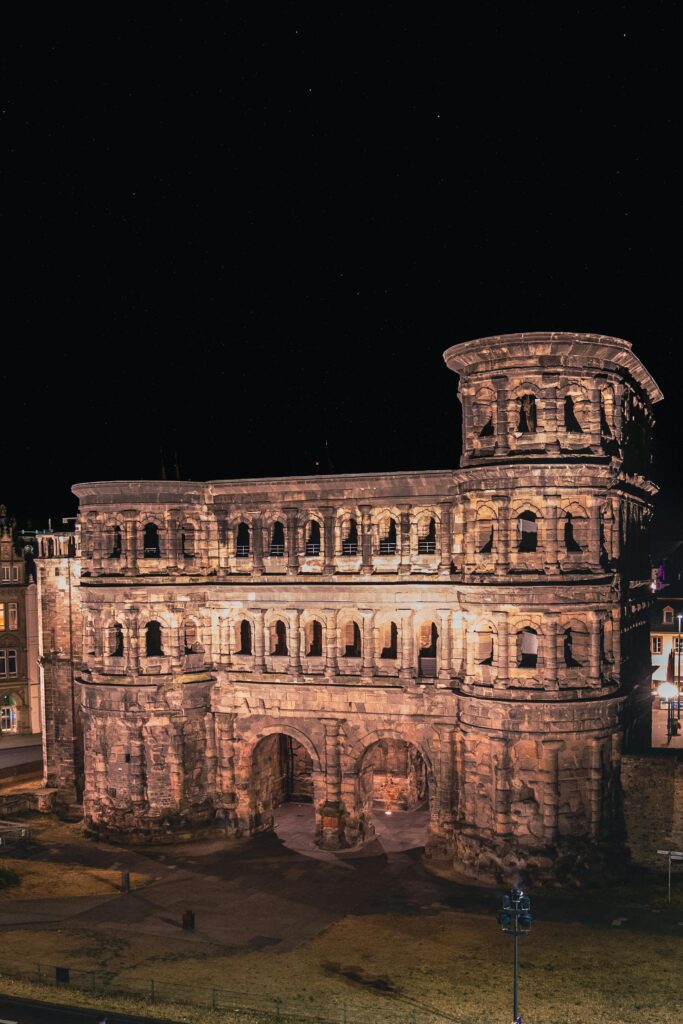
No trip to Germany’s oldest city is complete without visiting the Porta Nigra. This grand Roman city gate, constructed around 170 AD, remains impressively well-preserved. Its dark stone exterior is what earned it the name “Black Gate.”
Visitors have the opportunity to ascend the Porta Nigra for breathtaking views of Trier. Inside, informative displays illustrate its dual role as both a defensive structure and a church. It stands as an exceptional example of Roman engineering.
Trier’s Roman Amphitheater: A Nod to Gladiatorial Times
Trier’s Roman Amphitheater once welcomed crowds of as many as 20,000 for gladiator contests and theatrical performances. Nowadays, guests can wander through the ancient passageways and experience the thrill of Roman entertainment.
The ambiance is particularly lively during summer events when reenactments bring ancient Roman culture to contemporary spectators. Situated on the outskirts of the city, the amphitheater also provides beautiful views of the nearby vineyards.
Imperial Baths: Roman Leisure in Germany’s Oldest City
The Kaiserthermen (Imperial Baths) exemplify the grandeur of Roman daily living. Though these ruins were never fully finished, they offer profound insight into Roman building techniques and architecture.
Visitors can traverse underground paths, admire the expansive stonework, and discover how water was heated for communal bathing. The size of the site illustrates Trier’s significance within the Roman Empire.
Trier Cathedral: The Oldest Church in Germany
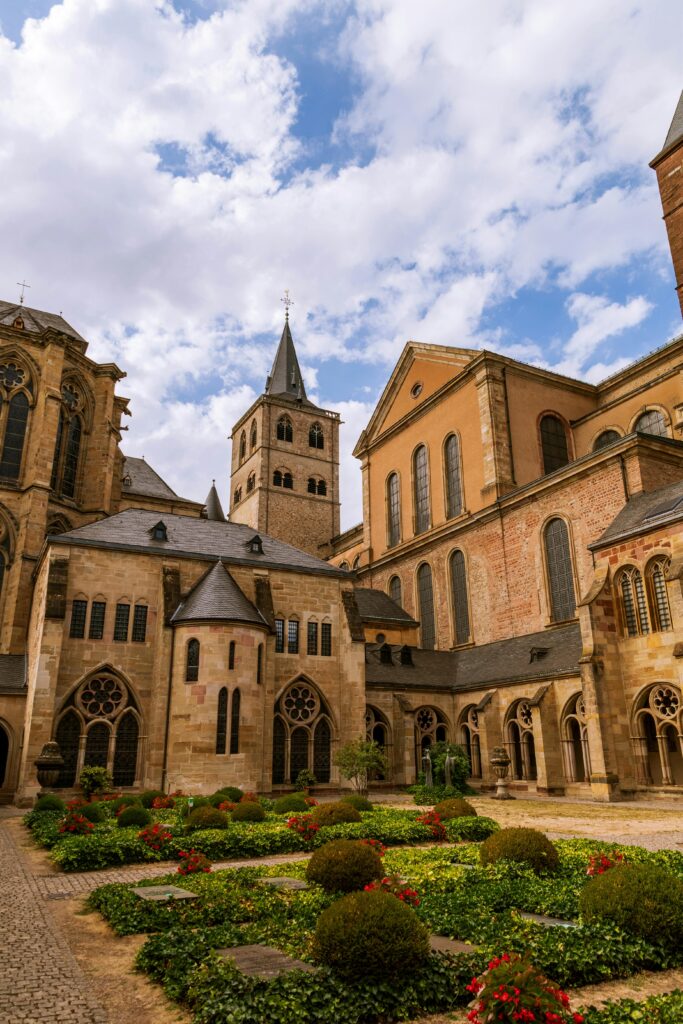
St. Peter’s Cathedral in Trier is the oldest church in Germany, built on the foundation of a Roman palace and completed around 340 AD. It serves as a place of worship, a historical record, and a site for pilgrimages.
Inside, the Holy Robe, which is believed to be the garment worn by Christ, is housed. The blending of Romanesque, Gothic, and Baroque styles in its architecture reflects the historical layers found throughout the city.
The Church of Our Lady: An Early Gothic Wonder
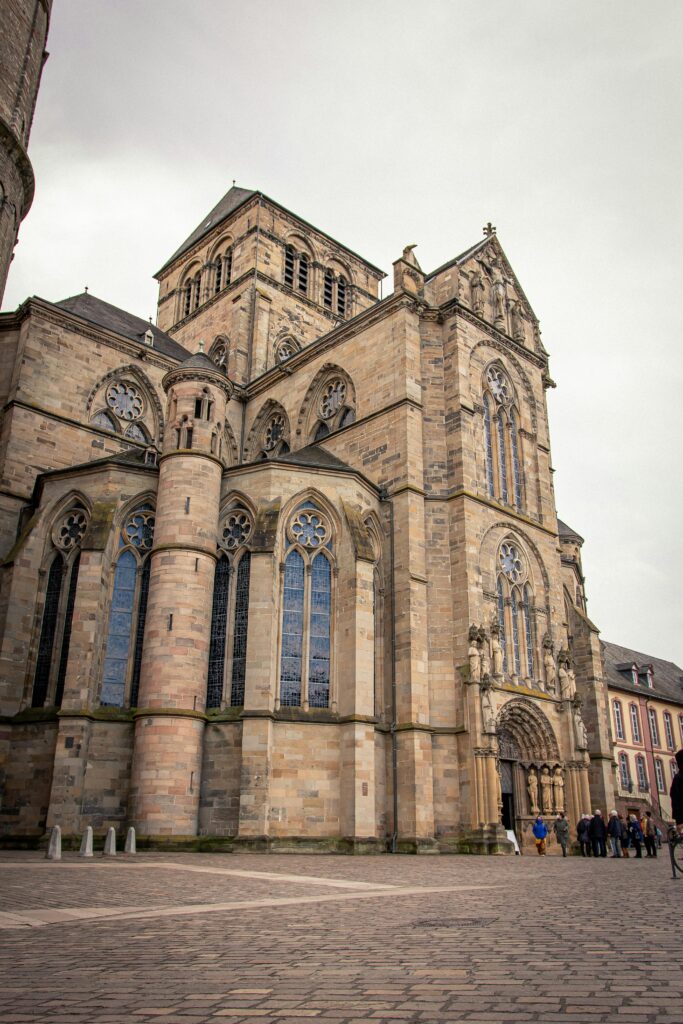
Adjacent to Trier Cathedral is the Liebfrauenkirche (Church of Our Lady), Germany’s oldest Gothic church. It features a distinctive circular layout and exquisite stained glass windows.
This architectural treasure is one of the earliest instances of French-influenced Gothic design in Germany. It continues to be a serene space for contemplation and a shining gem in Trier’s historical landscape.
Roman Bridge: A Tribute to Roman Construction
The Roman Bridge (Römerbrücke) spanning the Moselle River dates back to the 2nd century AD. It is the oldest bridge north of the Alps that remains operational today.
Originally constructed with stone supports and wooden planks, it was later enhanced with stone arches. Crossing it allows visitors to connect with 1,800 years of commerce and travel.
Electoral Palace and Palace Garden
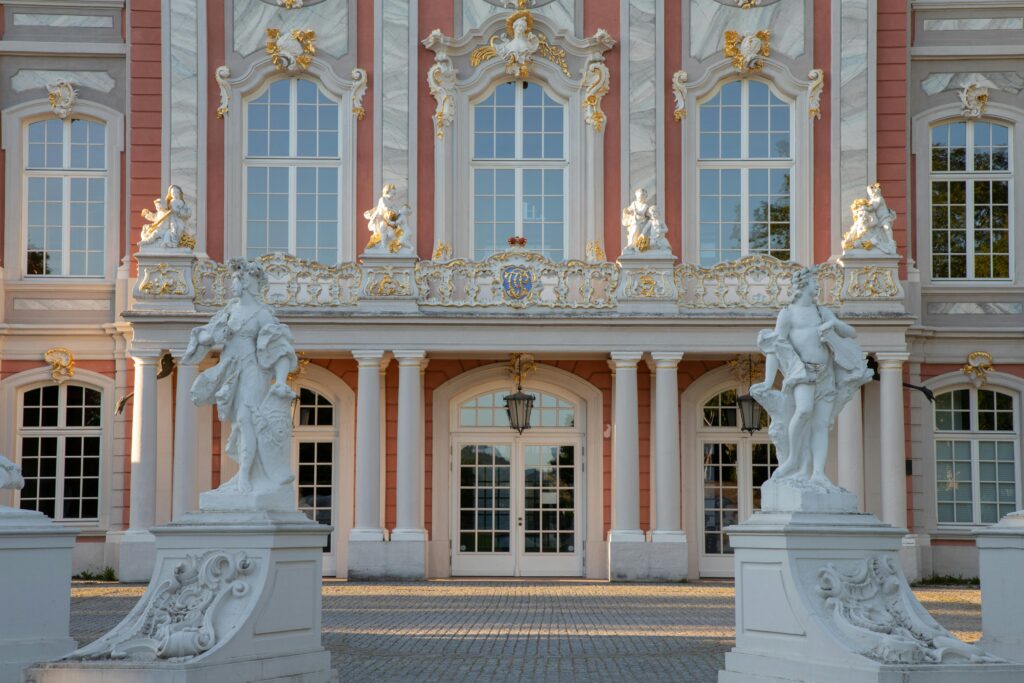
Next to the Constantine Basilica, the Electoral Palace displays Trier’s medieval and Renaissance history. Its elaborate pink-and-white Baroque exterior creates a striking contrast with adjacent Roman architecture.
The gardens of the palace provide a tranquil walk through neatly trimmed lawns and fountains. Both locals and travelers cherish the peaceful ambiance, especially during the spring and summer seasons.
Karl Marx House: Trier’s Contemporary Landmark
As the oldest city in Germany, Trier is also the birthplace of Karl Marx, one of the pivotal thinkers of the 19th century. His childhood residence has been transformed into a museum that celebrates his life, writings, and worldwide influence.
The Karl Marx House features engaging exhibits and multimedia displays that provide insight into his theories and the historical context surrounding them. It’s an essential stop for those interested in philosophy and political science.
Wine Culture and the Moselle Valley

Situated in the heart of the Moselle wine region, Trier is surrounded by vineyards producing some of the finest Rieslings in Germany. Wine tasting is an essential experience during your visit to the area.
Local wine taverns (Weinstuben) provide inviting atmospheres for sampling regional wines accompanied by hearty German fare. Consider joining a guided tour or river cruise to explore more of the Moselle Valley.
Festivals and Events in Trier
Trier bursts with life all year round through various cultural celebrations. Roman Days in the summer showcase costume reenactments and historical demonstrations.
The Trier Christmas Market, held in the medieval main square, is one of the most picturesque in Germany. With live music, local crafts, and spiced mulled wine, it creates a festive ambiance that attracts thousands each year.
Getting to Trier and Getting Around
Trier is easily accessible by train from major German cities such as Frankfurt, Cologne, and Luxembourg City. Once you arrive, public buses and pedestrian areas simplify exploration.
Cycling and walking are favored options, especially along the beautiful Moselle River. For a comprehensive historical experience, look into guided walking tours organized by local experts.
Day Trips from Trier
From Germany’s oldest city, you can conveniently visit other regional treasures. Luxembourg is merely a 45-minute train journey away. The town of Bernkastell-Kues boasts medieval streets and exquisite wine tasting opportunities. Saarburg, known for its hillside waterfall and vineyards, is another superb getaway.
Trier also serves as an excellent base for further exploration of the Moselle and Saar regions, replete with castles and stunning vistas.
Where to Stay in Trier
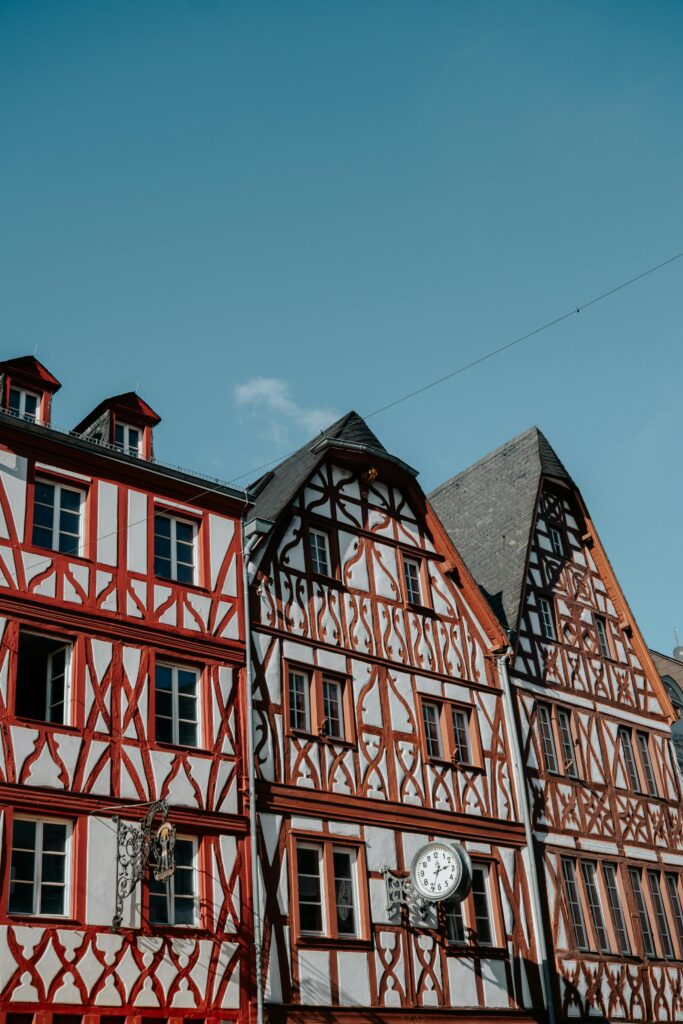
Trier provides accommodation options that suit every budget. Staying in the city center places you close to the Roman landmarks. Upscale choices include Hotel Park Plaza and the Mercure Hotel Porta Nigra. Budget-conscious travelers will find appealing hostels and quaint guesthouses.
It’s wise to book early during peak summer and the Christmas market season, as many hotels offer deals that include museum passes and local activities.
Where to Eat in Trier
The dining scene in Trier features hearty German fare alongside international cuisine. Don’t miss local specialties like Trierer Viez (apple wine) and pork knuckle.
Establishments such as Weinhaus Trier and Zum Domstein provide a traditional atmosphere while serving regional dishes. For a quick bite, check out food stalls in the main square or enjoy cafés along Simeonstraße.
Final Thoughts: Why Explore Germany’s Oldest City?
Trier serves as a vibrant museum that merges Roman elegance, medieval allure, and contemporary cultural life. With its UNESCO-listed ruins and charming wine taverns, it offers something appealing for every traveler. Whether you’re passionate about history, enthusiastic about wine, or just in search of a unique city escape in Germany, Trier has something to offer everyone.

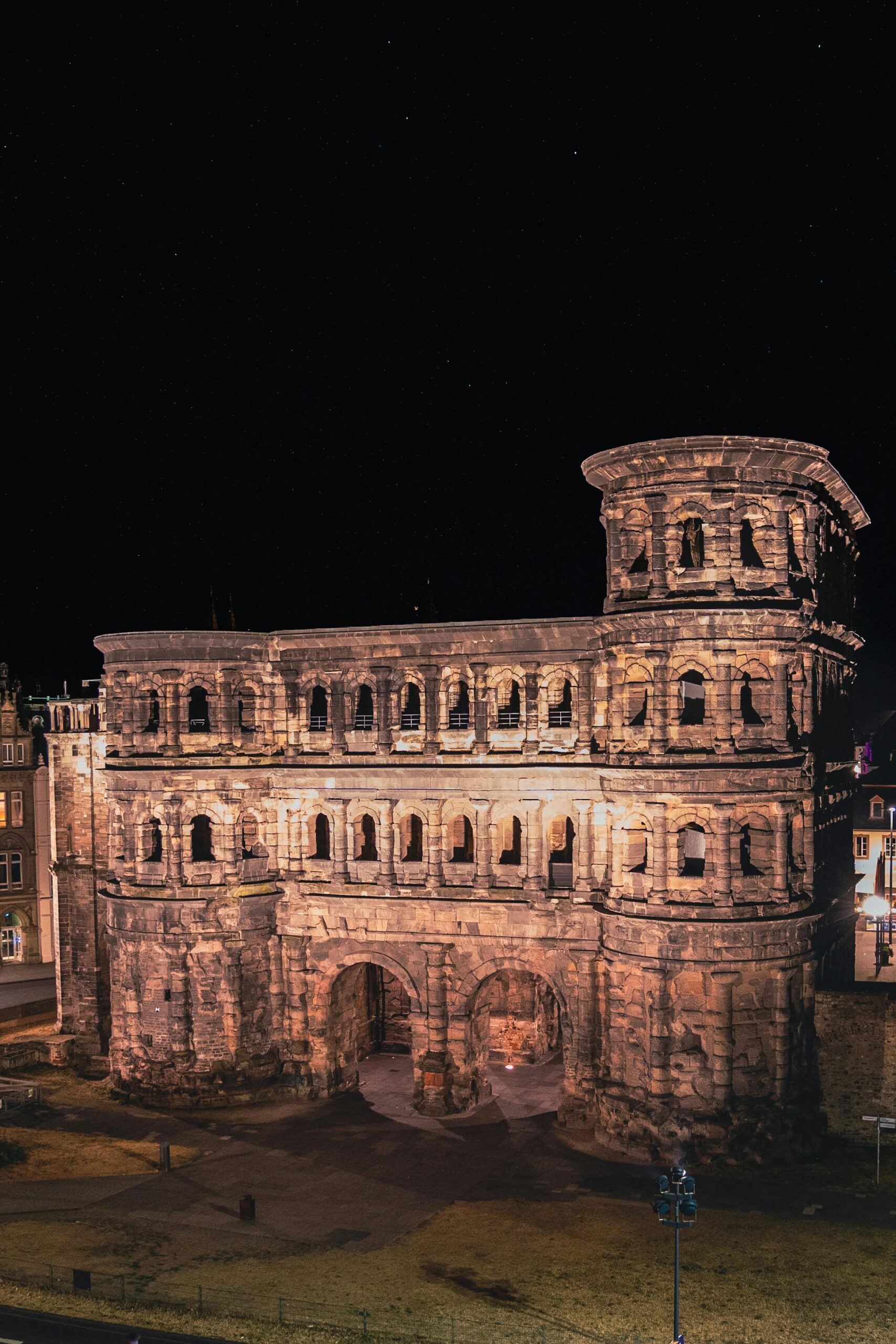
Leave a Reply